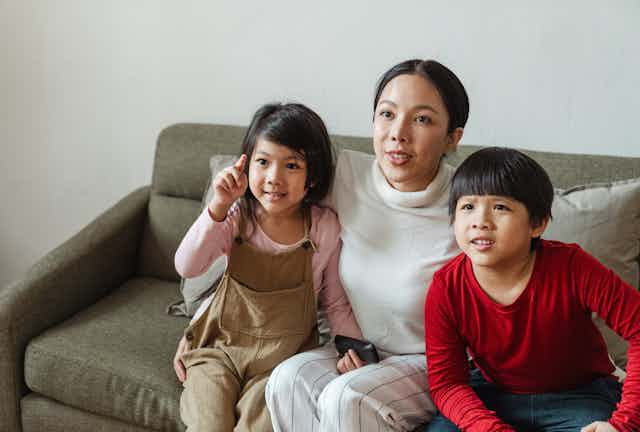Ask any parent and it’s likely they’ll tell you they’re worried about their kids’ screen time. A 2021 poll found it was Australian parents’ number one health concern for their kids – ahead of cyberbullying and unhealthy diets. But how worried should parents be?
The information that’s out there can be confusing. Some psychologists have compared it to smoking (amid concerns about “secondhand screen time”), while others are telling us not to worry too much about kids and screens.
Academics are also confused. As The Lancet noted in 2019, researchers’ understanding of the benefits, risks and harms of the digital landscape is “sorely lacking”.
In our new research, we wanted to give parents, policymakers and researchers a comprehensive summary of the best evidence on the influence of screens on children’s physical and psychological health, education and development.
What we did
Meta-analyses are one of the best forms of evidence because they summarise the findings of lots of research all at once.
This can give us a much better view of what is happening than just looking at a single study of one group of people. So we gathered all meta-analyses conducted in English on any form of screen time in children, regardless of the outcome.
We found 217 meta-analyses, with almost half published in just the last two years. These meta-analyses represent the findings from 2,451 individual studies and have a combined sample size of more than 1.9 million children and adolescents up to 18 years. The individual studies were done between 1954 and 2021 and the meta-analyses were done between 1982 and 2022.

The good news
We found some things that should reassure parents.
The overall size of the influence of screens across the outcomes (for example, depression, body weight, literacy and sleep) in children were small.
Almost all of the results had correlations less than 0.2, which is about the same as the correlation between height and intelligence. That doesn’t mean the effect for an individual child will always be that small, just that on average, the relationship is small.
How kids use screens matters
We also found it’s not the screen itself that really matters but what’s on it and the way kids use it.
Television is a form of screen time that has worried parents for more than half a century. We did find general television viewing was associated with poorer academic performance and literacy skills. Our study did not give us time limits, but found a linear relationship. That is, the more TV a child watched, the poorer their literacy skills were.
But if the program was educational or if the child was watching with a parent, we found there was a benefit to their literacy. This is probably because it gives parents an opportunity to talk about things in the show (“I think Bluey is feeling dissapointed”) or ask questions (“what is Bingo drawing?”) which develops language skills.
Read more: More Bluey, less PAW Patrol: why Australian parents want locally made TV for their kids
The not so good news

We did find some forms of screen time are consistently associated with harm and had no evidence of benefits.
Chief among these was social media, which was associated with depression, anxiety and risk taking. Again, our research found a relationship between the more time a child spent on social media, the more likely they were to have a mental health issue.
This is similar to the advice released this year from the US Surgeon General. This noted while social media could provide community and connections for young people (particularly from marginalised groups), it could also harm their mental health.
Read more: Excessive screen time can affect young people's emotional development
What does it mean?
As other education experts have noted, “screen time” is a bit of a useless term.
Nobody thinks facetiming Nanna and scrolling TikTok are equivalent, but both would fall into the category of “recreational screen time” in the Australian guidelines.
So, a key message from our study is to focus less on an unachievable time limit, and instead focus on what kids are actually doing on screens. Try to steer them towards educational apps, TV programs and video games.
But it can’t be education all the time – kids also need time for recreation. And if you watch with your child, it can also have benefits.
Read more: If your kid is home sick from school, is unlimited screen time OK?
Don’t forget to be active
Regardless of what screen-based activities you choose to allow, remember most screen time is sedentary. Long periods of sitting aren’t great for kids (or adults!), so breaking up these periods with movement is still important.
Ultimately, the most important factor for child development is quality parenting. Being present, spending quality time and creating a caring environment are what really make a difference for children. You matter more to your child’s mental and physical health than the screen.

